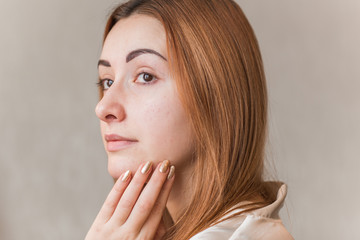Spring Break Travel Tips
We offer a wide range of coolibar products, including shirts, hats, and more. These offer UPF protection and are a great way to stay safe in the summer sun.
Learn more about skin cancer:
March is upon us, and with it comes the beginning of Spring - and Spring Break! For those traveling during this period, we’ll cover a few important travel tips, including practicing safe sun, avoiding or treating blisters, and making sure you don’t bring home any uninvited guests from your hotel.
Sun protection
Often, Spring Break travel plans include exotic beach destinations. When escaping the chill of a North Carolina winter, it’s tempting to lay out on the beach and chase that golden tan. While we encourage enjoying all that nature has to offer, it is always important to consider the long-term consequences of sun exposure, and be smart about your UV exposure risks.
Exposure to the UV wavelengths in sunlight and tanning beds causes the breakdown of collagen proteins in the skin, leading to wrinkles as well as thinning of the skin and easy bruising. Additionally, rates of melanoma and non-melanoma skin cancers are on the rise, and approximately 9,500 people are diagnosed with skin cancer every day. Skin cancer risk is directly tied to UV exposure, including both natural sunlight as well as indoor tanning (tanning beds).
So, how to protect yourself? First, be smart about your exposure. Avoidance of direct sunlight between 10 AM and 4 PM is the most effective way to lower your UV exposure. Next most effective is sun protective clothing - that includes hats, shirts, pants and footwear with UPF ratings of 50 or higher. Lastly, wear your sunscreen! There are many excellent sunscreen options, and it can get a little overwhelming. The American Academy of Dermatology recommends using a sunscreen with SPF of at least 30, and selecting one that is water resistant and “broad spectrum,” which means it blocks both UVA and UVB. More information about sunscreen selection can be found on the AAD website.
Blisters - prevention and treatment
Travel often means lots of long walks and hikes, sometimes in footwear we don’t usually wear. This can predispose to blister formation, which can put a significant damper on enjoyment of your vacation.
Wear comfortable, well-fitting shoes. This may mean getting that new pair of hiking boots or cute vacation shoes a few weeks before your planned travel to ensure they are broken in and fit properly prior to your trip.
Wear moisture-wicking socks. Both synthetic (nylon) and natural fiber (merino wool) options are available. Avoid cotton socks, which trap sweat and moisture against the feet, increasing the risk of blister formation. Additionally, choosing thicker socks or wearing two pairs of socks can also decrease irritating pressure points - just be sure your shoes aren’t too tight.
Consider soft bandages such as moleskin for areas of high friction.
What if, despite your best efforts, you still get a blister?
Cover the blister and use padding. Padding can be cut into a doughnut shape to avoid putting pressure directly on the blister itself.
Avoid popping or draining the blister. Doing so can increase your risk of infection. However, if the blister is tense and very painful, you can sterilize a sharp needle with rubbing alcohol and carefully pierce the edge of the blister, allowing the fluid to drain.
Do not unroof the blister. The skin on top of it provides excellent protection for the new skin to form underneath. If it does unroof by itself, cover the area with a thin layer of Vaseline and a soft bandage.
If you notice any signs of infection (redness, pus, increased pain or swelling), be sure to see your dermatologist or go to an urgent care center.
Bedbugs - the unwelcome travel companion
Bed bugs are small, but not microscopic, insects that feed on human blood. They are most frequently picked up while traveling. Although they don’t typically cause severe medical problems, they can cause a lot of anxiety and itchy, restless nights. When checking into your hotel, cruise ship cabin, or other vacation spot, consider checking the room before unpacking.
Place your bags on the luggage rack - not the bed or the floor. If there are bed bugs, you don’t want to give them easy access to your suitcase!
When first entering the room, take a deep breath. A heavy bedbug infestation can cause a sweet or musty odor.
Check the bed, including the sheets, blankets, pillows and mattress. Pay particular attention to the corners and seams of the mattress. Look for: black specks (bed bug excrement), brownish-red flecks of blood, or shell-like remains (bed bugs shed their outer shells as they grow).
Check the remainder of the upholstered furniture.
If you see any sign of bedbugs, immediately request a different room (not near the current room). Repeat your check of your new room!
If you are concerned that you may have picked up bed bugs, inspect everything you bring home (luggage, purses, etc). Look for the same findings as when checking your hotel room. If you have any suspicion that you’ve brought them home with you, take the following actions.
Wash all clothes you brought with you (even if you didn’t wear them) in hot water and dry them on high heat.
Use a hand steamer to clean your luggage and other bags.
If you think you have a bed bug infestation in your home, it’s best to contact a professional pest control agent. You can find more information on PestWorld.org










